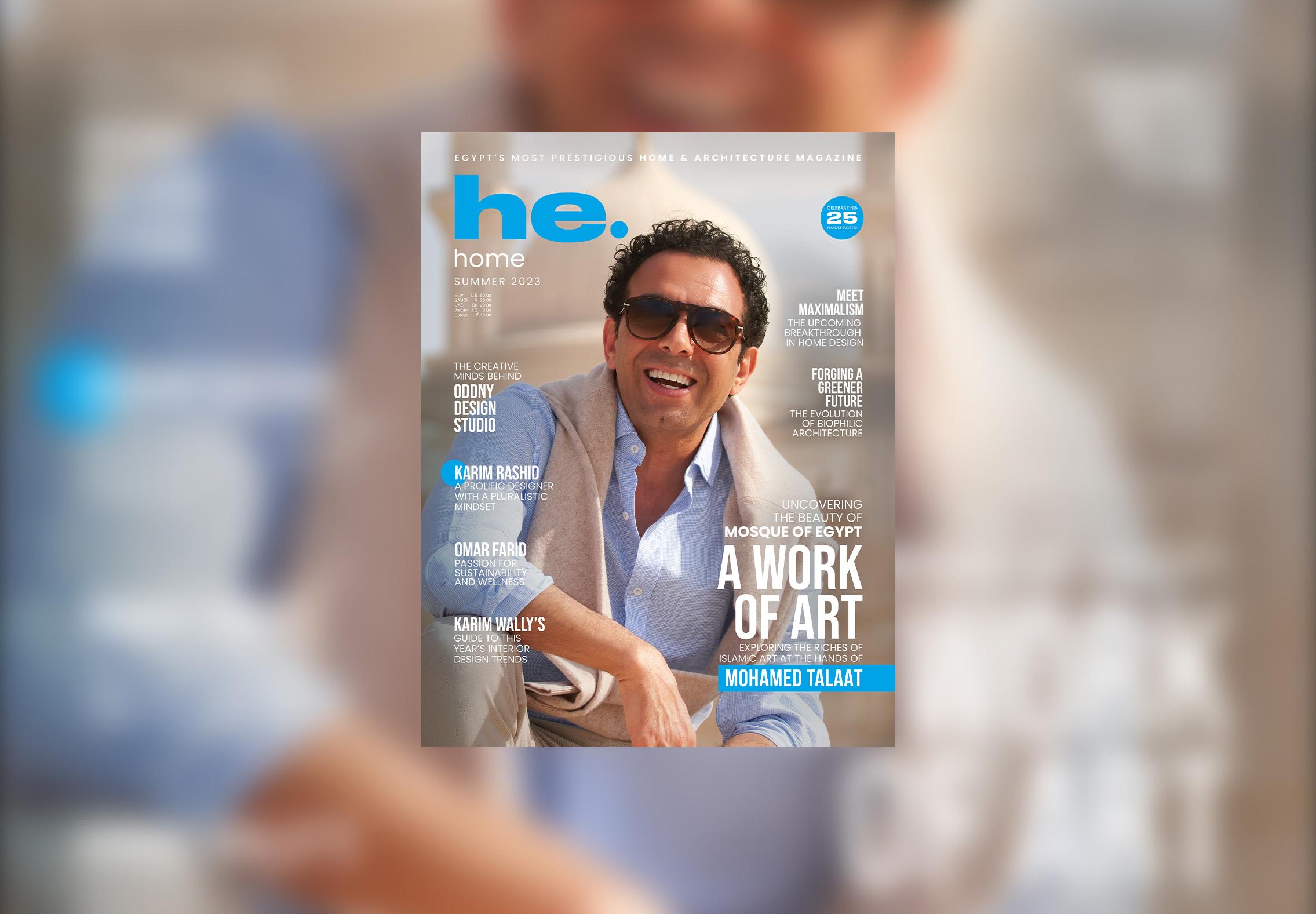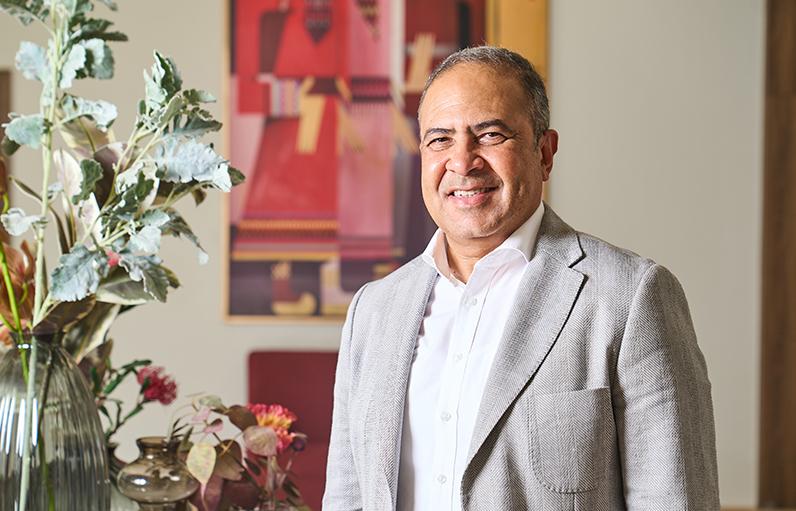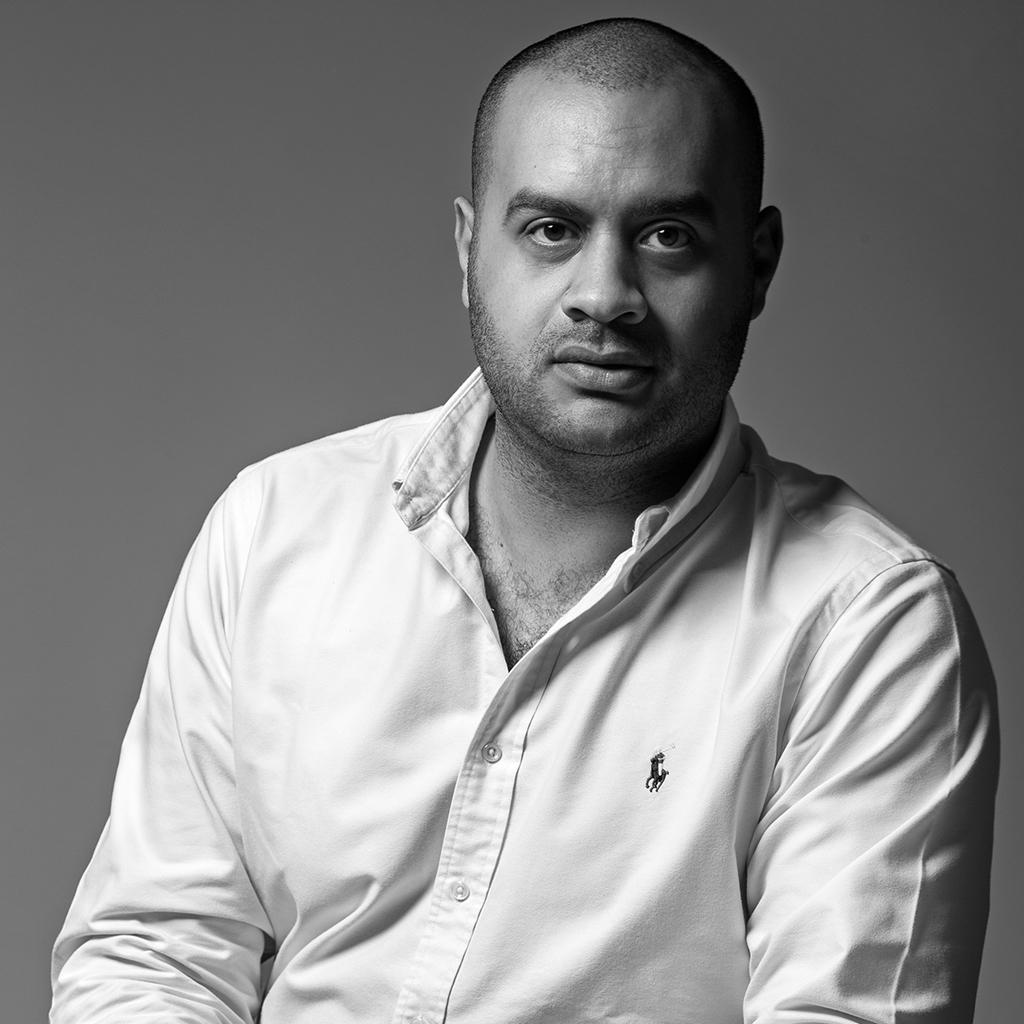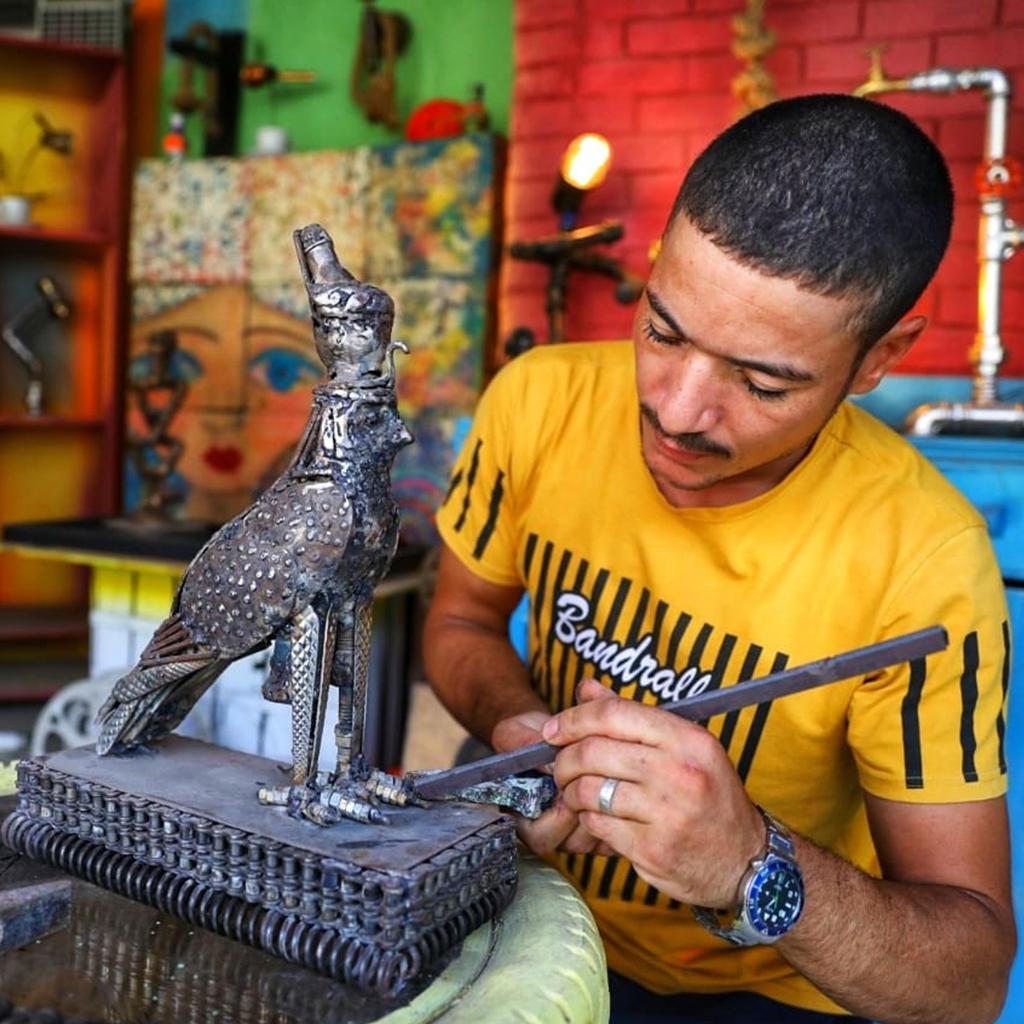
Written by: Farah Hassan
Date: 2023-06-13
Exploring the richness of Islamic art at the hands of MTA’s founder, Mohamed Talaat

Nestled in the heart of Egypt's new capital, the Mosque of Egypt stands tall, representing the country's rich history and architectural heritage. With its grand domes and intricate detailing, this remarkable structure showcases the finest craftsmanship of the Islamic world. More than a physical edifice, the Mosque of Egypt is a place of worship, contemplation, and community, where people gather to celebrate their shared faith and heritage. Through its intricate beauty and historical significance, the mosque serves as a source of hope and inspiration, demonstrating the transcendent power of art and architecture.
Join us as we delve into the captivating history and design of this extraordinary mosque through an interview with Mohamed Talaat himself, who guides us through the project, exploring its distinctive features and the challenges faced by his team of specialized architects in bringing it to life. From the utilization of natural materials to the incorporation of traditional Islamic motifs, this article takes you on a journey through the splendor and intricacy of the Mosque of Egypt.
MTA: Artistic Mastery for a New Capital
Mohamed Talaat is a renowned architect with extensive experience, making significant contributions to the field of architecture in Egypt and beyond. With a strong focus on sustainability and user experience, his firm, MTA, has gained immense respect in the country, known for its innovative designs that blend modern and traditional elements.
Under Talaat's leadership, the firm has taken on challenging and complex projects, including the Mosque of Egypt situated in the new administrative capital. This project stands as a testament to the firm's expertise and dedication. With a team of talented architects and designers, MTA continuously pushes the boundaries of architectural possibilities, creating spaces that not only inspire but also cater to the needs of the communities they serve. Talaat expresses his pride in his team's commitment and skill, stating, "My team of highly skilled and talented architects shared in this excitement, and the knowledge that their work would contribute to the country's history and future inspired them to give their very best. This sense of national pride and dedication to excellence was palpable throughout our work, and I am deeply proud and grateful to have had such a committed and skilled team by my side. Together, we were able to create something truly remarkable and meaningful for Egypt and its people."
According to Talaat, this project is not merely about constructing a building; it is a tribute to the country's legacy and an investment in its future. As one of the participating offices in the design process, MTA collaborated with over 22 consultants from various fields to create something magical and befitting of a new capital's mosque. Talaat remarks, "We firmly believe in the importance and significance of the new capital here in Egypt and the architectural evolution that has emerged as a result. Speaking on behalf of all of us, I can say that this project holds a very special place in our hearts at our firm. It is a powerful and historic undertaking that we believe will only grow in importance in the years to come. We are honored to have been a part of this endeavor and look forward to seeing it stand as a testament to the beauty and significance of our culture and architecture."

The Mosque's Interior Intricacies
As you step inside the mosque, a profound sense of awe and wonder immediately embraces you. The interior is bathed in a gentle, filtered light that gracefully enters through the windows. The walls are adorned with intricate calligraphy, bearing witness to Egypt's rich history and cultural heritage. The graceful arches and domes exude a majestic aura, enveloping the space in an atmosphere of tranquility and reverence. Mohamed Talaat shares, "The mosque is an expansive space that can accommodate up to 131,000 worshipers, making it one of the largest mosques in the world after the Holy Haramein. The clear space surrounding the mosque spans approximately 19,100 m², with varying heights ranging from 17m up to 60m. In addition to the columns, we also designed large-scale wooden doors with exquisite brass detailing. The wooden ceilings were another crucial aspect of our design, featuring intricate Islamic motifs meticulously handcrafted using historical interlocking wooden techniques. The ceilings were further adorned with handcrafted oil paintings depicting all 99 holy names of God. The dome, one of the largest ever built, stands at an impressive height of over 35 meters, reaching around 60 meters at its pinnacle. Its meticulously detailed design, featuring a gradual shift in color from blue to beige that blends harmoniously with the wood, is genuinely one of the most breathtaking sights I have ever witnessed."
Initially, the project's columns were unremarkable, lacking distinguishing features that set them apart from others found across the country. However, with MTA's creative vision, these once ordinary columns were transformed into true works of art. Four arches were added, each representing one of the four schools of Islamic law, while the central dome stood as the magnificent centerpiece of the entire space.
But it wasn't solely the columns and arches that underwent a stunning transformation. MTA strategically utilized the mosque's soaring ceilings to create a sense of enclosure and sanctity for all who enter. The result is an interior that is simultaneously modern and deeply rooted in the ancient traditions of Islamic design.
Another noteworthy aspect of the interior design of the Mosque of Egypt is the deliberate use of light and shadow. Abundant windows and skylights allow natural light to permeate the space, engendering a captivating interplay of light and shadow that evolves throughout the day. This dynamic interplay accentuates different facets of the design, imbuing the space with a sense of movement. Talaat explains, "All the materials used in the project were natural, including wood, brass, and natural marble. We employed light colors to create a positive and uplifting atmosphere, embodying the profound spiritual connection between an individual and their Creator. By utilizing natural materials and colors, our aim was to craft a serene environment that encourages contemplation and reflection for our worshipers."

The natural light filtering through the windows and skylights adds a touch of warmth and ambiance to the Mosque of Egypt. Complementing the overall aesthetic of the mosque, the lighting fixtures enhance the space with a cohesive and harmonious design. These collective elements synergize to create a truly breathtaking interior in the Mosque of Egypt, appealing to art, architecture, and design enthusiasts alike.
Talaat elucidates that the overall design sought to harmoniously blend traditional Islamic architecture with modern elements, resulting in a stunning and distinctive space that pays homage to our country's history and legacy. The fusion of intricate detailing, natural materials, and thoughtful design choices has culminated in a mosque that not only stands among the world's largest but also astounds with its beauty and grandeur.

A Bittersweet Journey
Talaat candidly confesses, "Undoubtedly, this project has been one of the most arduous endeavors I have ever undertaken. The weight of designing something that would endure the test of time and be judged by future generations was immense. The pressure to create something deserving of such honor permeated the project, propelling us to strive for excellence in every facet of our work."
Designing the mosque, according to the architect, was an immense undertaking riddled with challenges and complexities that continuously tested skills and fortitude. The team tirelessly labored to bring their vision to fruition, cognizant of the importance of adhering to the demanding timeline set before them. Any delay would have incurred substantial costs and added pressure, necessitating unwavering focus and dedication.
Yet, perhaps the greatest challenge lay in envisioning and executing the mosque's expansive interior design. With soaring ceilings reaching unprecedented heights, the technical intricacies and conceptual blueprints demanded exceptional skill and expertise. Every aspect of the design necessitated meticulous consideration, from the choice of materials to the implementation of lighting and acoustics, all with the aim of fashioning a space that married functionality with aesthetics.

"Despite these challenges," Talaat reflects, "we remained unwavering in our commitment to our vision, toiling relentlessly to breathe life into it. As we contemplate the process of designing the mosque, we are filled with an overwhelming sense of pride and accomplishment. The hurdles we encountered only served to bolster our determination and deepen our devotion to excellence, resulting in a mosque that stands as a true masterpiece of Islamic architecture. The profound sense of awe and wonder that envelops visitors upon entering the space attests to the skill and dedication of everyone involved in the design process."
The architect continues, "Looking back at the project, we are reminded of the paramount significance of collaboration, creativity, and perseverance in the face of adversity. It is through these virtues that we triumphed over the myriad obstacles that arose and fashioned a space that is not only functional but also captivating, inspiring, and profoundly meaningful."
In the end, the mosque transcends being a mere physical structure; it serves as a testament to the transformative power of design and creativity to bridge divides and foster unity. Through its intricate details, awe-inspiring spaces, and rich history, it stands as a resounding reminder of the enduring legacy of Islamic architecture and its profound impact on our world today.
.jpeg)





